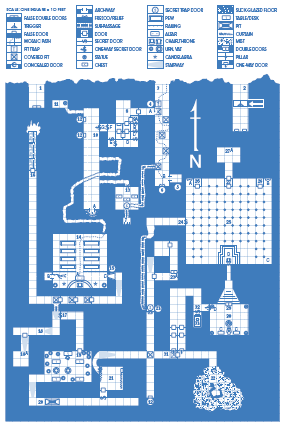evileeyore
Mrrrph
And the "should" and the "trying" here are both game and group relative.
But railroading is not. Liking and not liking and the degrees of investment in the rails is group relative
Has the GM cheated?
Cheating is also a tool. Neither good nor bad.
This is illusionism at best (if the players don't know because they choose to be deceived) and railroading - or, if you prefer, cheating - at worst.
On no. It was railroading the whole way.
None of that is inherently here or there in the context where 'linearity' counts. There are eight million stories in the naked city, each one in the event 'linear', and that is one of them.
So? You have anything to add or subtract from what I said or are you just admiring your own voice?
When the DM decides that this is "the" NPC business to which the players "must" pay attention, then that's a pretty significant step. It establishes the motive for getting pushy. The DM now has a way to get, and so faces the possibility of not getting his way if he just stands back and lets the players play.
Correct. If the DM forces the Players to take the hook that's dangled, it's a railroad. If not, it isn't.
Simple.
Wait... So the PCs would be fully capable of hypothetically freeing the prisoners on Day 1 and stop the Evil Vizier from transporting them to Sunburst Vale? (Perhaps forcing him to kidnap more victims on Day 3, and similarly postponing the rest of his plans unless they catch him first.)
Sure. I'm all about that.
Indeed I might even have set it up so the characters have the resources to foil all the kidnappings and deal with the Vizier before he can bring forth the Aithar Ghosts.
Or not. Depends on which genre I'm running, how much my players wanted to invest in the rails, etc.
I'm confused. Where, exactly, is the linearity in that design? To my eyes you appear to be describing a non-linear scenario. That's not a plot, it's a situation.
You know what, I think your right. I was tired and I'm probably arguing the Sandbox/Railroad styles and using Non-Linear plot pacing to describe the Sandbox style.
Eh. It's what I prefer to run so I tend to use "linear" when events fall in a "should occur in this order" and "non-linear" to describe "can occur in whatever order".
Providing an adventure hook isn't railroading by anyone's definition. It's the point where the GM insists that the PCs take the adventure hook that railroading occurs.
Yup.
To sum up: Catering to the players' taste isn't a railroad.
Why not? If the players prefer to ride the rails, why isn't that a railroad?
I know what your saying, I'm just pointing out, using the tool doesnot automatically make the game bad. It's the how much the players like being railroaded and the skill to which the DM guides the game. Too little of either (enjoyment and skill) lead to the term becoming a curse instead of a blessing.
Let's be clear: I like having some rails. Too much freedom to faff about has lead to every "sandbox" campaign I've been in falling apart.
Last edited:





